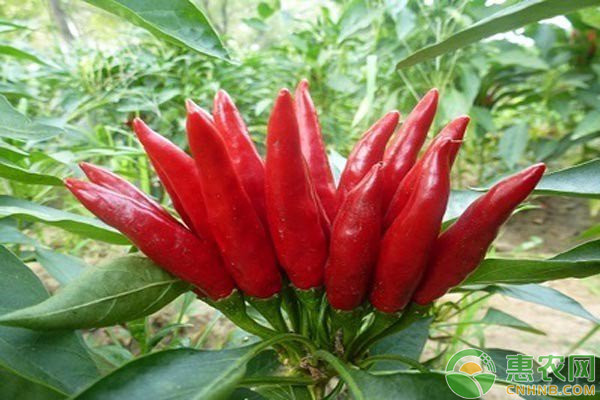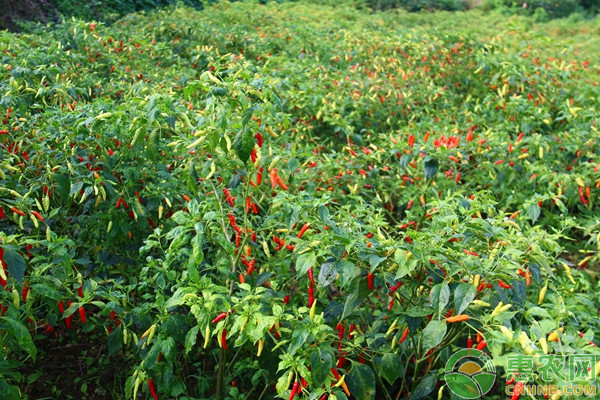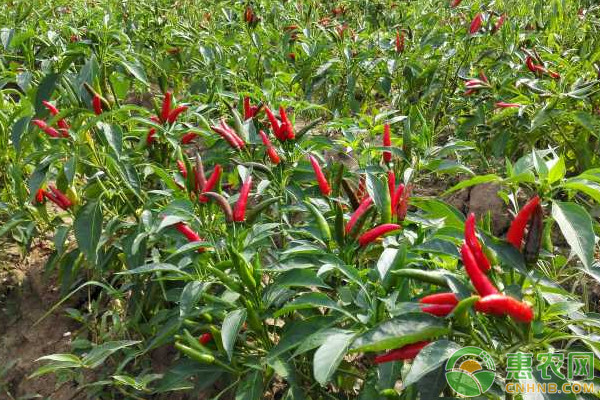Recently, some farmers have consulted Datian pepper in the background how to achieve high-yield cultivation? It is well known that pepper is one of the indispensable ingredients in many people's homes. Therefore, the market price of pepper has been quite good, and there are many areas where peppers are grown in China. Let's learn about Daejeon peppers with a farmer's friend. How to cultivate and grow can produce high yield.

First, the field preparation
Generally, 5,000 kg of high-quality decomposed organic fertilizer can be applied per mu, 200 kg of cake fat (or 1000 kg of chicken manure), 20 kg of potassium sulfate, 50 kg of superphosphate, 50 kg of ammonium bicarbonate, 20 kg of micro-fertilizer, and then fully Turn it over and apply it evenly.
Second, ridge filming
First of all, the field can be ridged 0.85 meters wide and 0.1m high, and the interval between the ridge and the ridge is 0.35 meters. It should be noted here that it is more convenient to keep the ridges flat and straight.
Third, field planting
It is usually after the night cream that the field is planted. When planting, be careful not to use steel to braze the eye, because the use of steel to braze the eye will squeeze the soil, which will hinder the root growth of the pepper seedlings.
Fourth, field management
The pepper seedlings after planting are in a weak growth period. At this time, the mixture of carbendazim, imidacloprid and virus spirit can be sprayed to prevent the damage of aphids and diseases. Also remember to keep the humidity in the field reasonable.

Five, light application of seedlings
When the pepper seedlings are in the stage of slow seedling to flowering, our topdressing should be based on compound fertilizer, which promotes the growth of the seedlings and lays a good foundation for the subsequent flowering results.
Sixth, steady application of initial fruit fertilizer
At this stage, before flowering until the first harvest, the main role of fertilization is to promote the branching, flowering and fruit setting of the pepper plants. Topdressing is mainly based on nitrogen, phosphorus and potassium compound fertilizers, using 25 kg per acre; 5 kg of boron fertilizer can be added per acre to increase the fruit setting rate.
Seven, heavy application of fruit fertilizer
The pepper enters the peak period and is the period of maximum fertilizer demand during the whole growing season. Fertilization is mainly based on nitrogen, phosphorus and potassium compound fertilizers, 30-40 kg per mu, and the amount of potassium fertilizer is increased in an appropriate amount, about 10 kg per mu, and a certain amount of micro-fertilizer is used together. Under normal circumstances, every time after topdressing, watering should be done in time to promote the absorption of nutrients by pepper and improve the utilization rate of fertilizer. At the same time, it can also increase the humidity in the field, which is conducive to flowering and fruit setting.
Eight, late fattening
In the later stage, the method of spraying can be used for top dressing. Specifically, urea, potassium dihydrogen phosphate, and other micro-fertilizers can be used.
Nine, cultivating and rupturing
In the middle stage of pepper growth, due to watering, fertilization, rainfall and other agricultural operations, it is easy to cause soil compaction and lyrical damage. Before mulching, it should be ruptured by membrane mulching in order to promote the deep growth of roots and prevent premature aging.
The depth and extent of cultivating will be based on the root system. In general, timely watering after cultivating soil is beneficial to the growth of pepper. The field management of pepper during the whole growth period is well done, the plant grows robustly, the resistance of pepper is relatively enhanced, the disease is less harmful, the number of medications can be reduced, the production cost is reduced, the yield is increased, and the quality of pepper can be improved.

X. Pest control
The main pests of pepper are mainly aphids, cotton bollworms and diamondback moths. The diseases are mainly blight, wilt, anthracnose, bacterial wilt, scab and viral diseases and diseases. Aphids are the media of viral diseases. It is necessary to pay attention to the control of aphids. It can be treated with imidacloprid or pyrethroid pesticides, and has good control effects on cotton bollworm and diamondback moth.
Bacterial wilt, blight, blight, and anthrax are fungal diseases. Spraying can be carried out with carbendazim, methyl thiophanate, and bacteriostatic. Bacterial wilt and scab are bacterial diseases, which can be controlled by streptomycin and neomycin. Viral disease is caused by a virus. It should be treated with phlegm and disease prevention as the main means. It can be sprayed with phytopathology and virus spirit for prevention and treatment.
The above is the key technical points related to the cultivation of Datian pepper. The needy vegetable farmers can collect the reserve first. If you have better planting technology, please come to Huinong.com!
We are manufacturer ofWiFi Solar Camera in China, if you want to buy Mini Camera , 4G Solar Camera,Hidden Wireless Cameras,Camera Cctv With Motion Detection Solar Camera please contact us.
What problems should we pay attention to when using solar energy for power supply?
1. The whole day sunshine time of monitoring points along the expressway shall be considered first. As the main energy of the power supply system comes from sunlight, the sunshine exposure time must be considered, which is particularly prominent in mountainous areas where there is little sunshine, but not in plain areas.
2. Working power, working voltage and current of monitoring facilities along the expressway. After considering the power of the whole load, we can choose the solar panel that is more suitable for the long-term operation of the equipment.
3. If the battery discharge cannot make the monitoring equipment work for a long time, the monitoring system will be paralyzed in the rainy season, but the expressway is prone to accidents in the rainy season.
4. The conversion rate of solar cells is low. At present, the conversion rate of solar cell power supply is only about 20%, that is to say, if the silicon solar cell is spread over a square meter, 100~200W of power can be obtained, which is obviously not enough to meet the long-term operation of the monitoring equipment. Of course, with the development of technology and the improvement of the quality of crystalline silicon cells, we can obtain more power resources in a smaller area in the near future.
WiFi Solar Camera,Solar Ip Camera,Smart Surveillance Cctv 4G,Solar CCTV Camera System,Night Vision Infrared Solar Camera
Shenzhen Fuvision Electronics Co., Ltd. , https://www.szsolarcamera.com